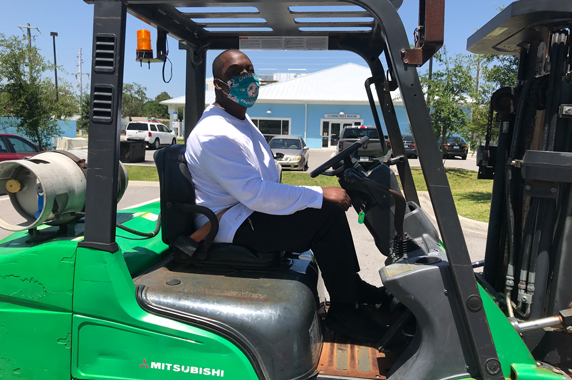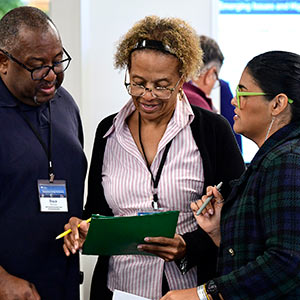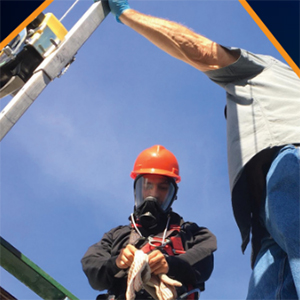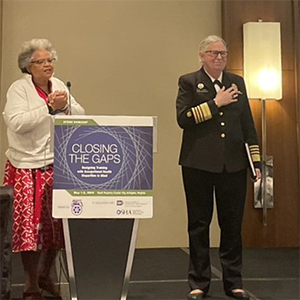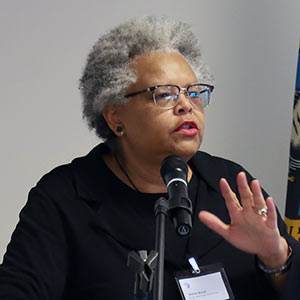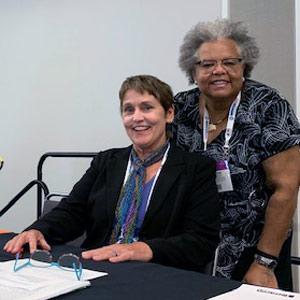During the NIEHS Worker Training Program (WTP) spring 2022 workshop(https://tools.niehs.nih.gov/wetp/events.cfm?id=2622) held May 18-19, participants exchanged strategies and best practices for mitigating the impacts of climate change on workers and communities.
“Climate change is a critical challenge, and WTP plays an important role(https://tools.niehs.nih.gov/wetp/public/hasl_get_blob.cfm?ID=13344) in tackling the climate crisis,” said WTP Director Sharon Beard. “Every person we train, every training tool and curriculum we develop, or adapt, matters.”
Experts from universities, labor groups, community-based organizations, and government agencies shared their perspectives during the workshop.
Different exposures and impacts
Speakers shared how climate-related disasters or events, such as wildfires and flooding, can create unanticipated and toxic exposures for workers and communities.
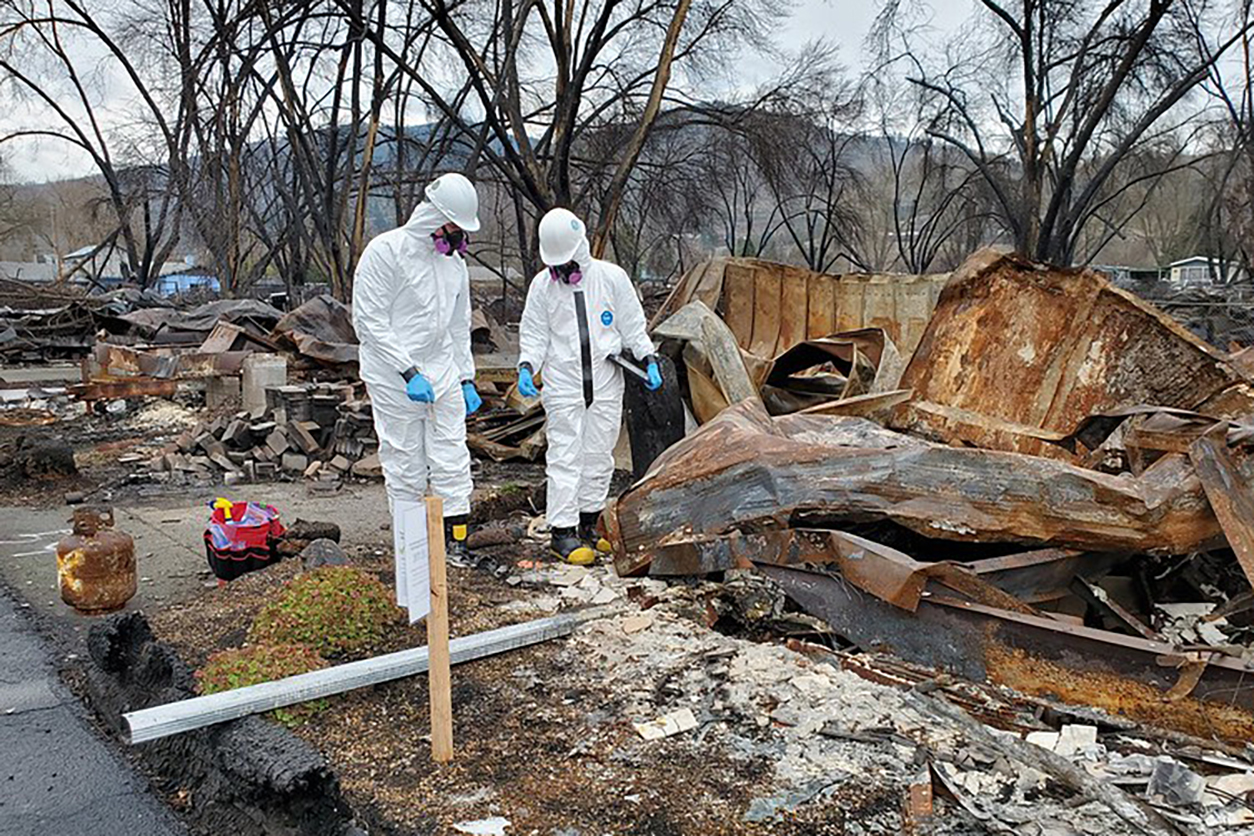 Wildfire cleanup in Almeda, Oregon. (Photo courtesy of Oregon Department of Transportation)
Wildfire cleanup in Almeda, Oregon. (Photo courtesy of Oregon Department of Transportation)Dawn Bolstad-Johnson, CIH, of Kaizen Safety Solutions, LLC, discussed exposures in smoke from wildfires and house fires. She explained the difference in construction materials for modern homes compared to homes built more than 20 years ago. Chemicals in these materials make smoke very toxic even long after the fire is extinguished. “Every fire should be treated as a HAZMAT event,” she said.
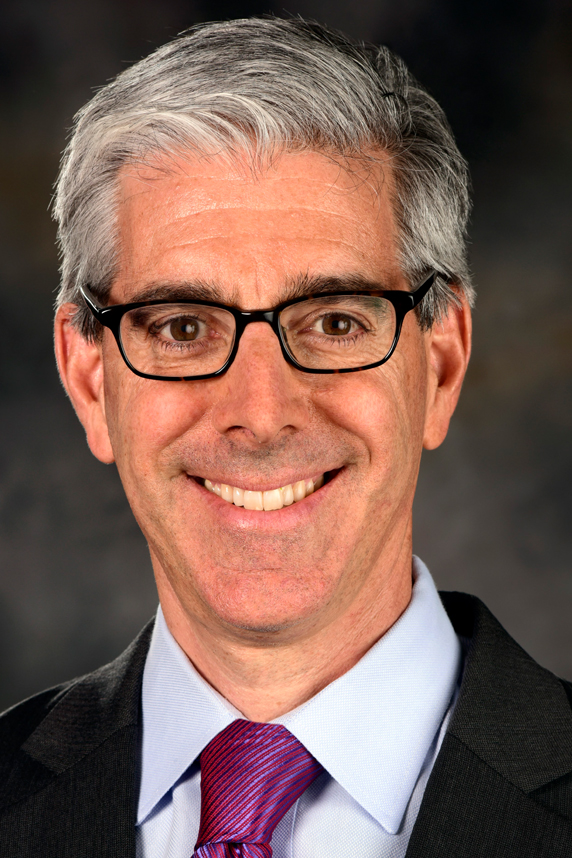 Balbus shared the importance of focusing on social determinants of health to mitigate the impacts of climate change. (Photo courtesy of Steve McCaw / NIEHS)
Balbus shared the importance of focusing on social determinants of health to mitigate the impacts of climate change. (Photo courtesy of Steve McCaw / NIEHS)Kim Dunn and Bruce McClue, from WTP grantee the Deep South Center for Environmental Justice, which is part of the Historically Black Colleges and Universities Consortium, said several hazards are present in floodwaters following a hurricane or severe storm. They include downed powerlines, sharp objects, pesticides, and biological hazards.
Social determinants of health
John Balbus, M.D., interim director of the new Office of Climate Change and Health Equity (OCCHE) in the Office of the Assistant Secretary of Health, noted the complexity of factors driving climate change and public health outcomes.
According to Balbus, race, economic status, health care access, and other social determinants of health impact climate vulnerabilities. Focusing on these factors is key to develop strategies and protect the health of workers and communities.
“The best strategies involve community engagement,” Balbus said. “Community-based solutions are an essential component of long-term resilience for climate change.”
Train underserved communities
Speakers discussed how underserved communities and workers, such as immigrant day laborers and agriculture workers, are often overlooked during climate-related events or disasters. These workers face unique challenges and need targeted training to protect their health and safety.
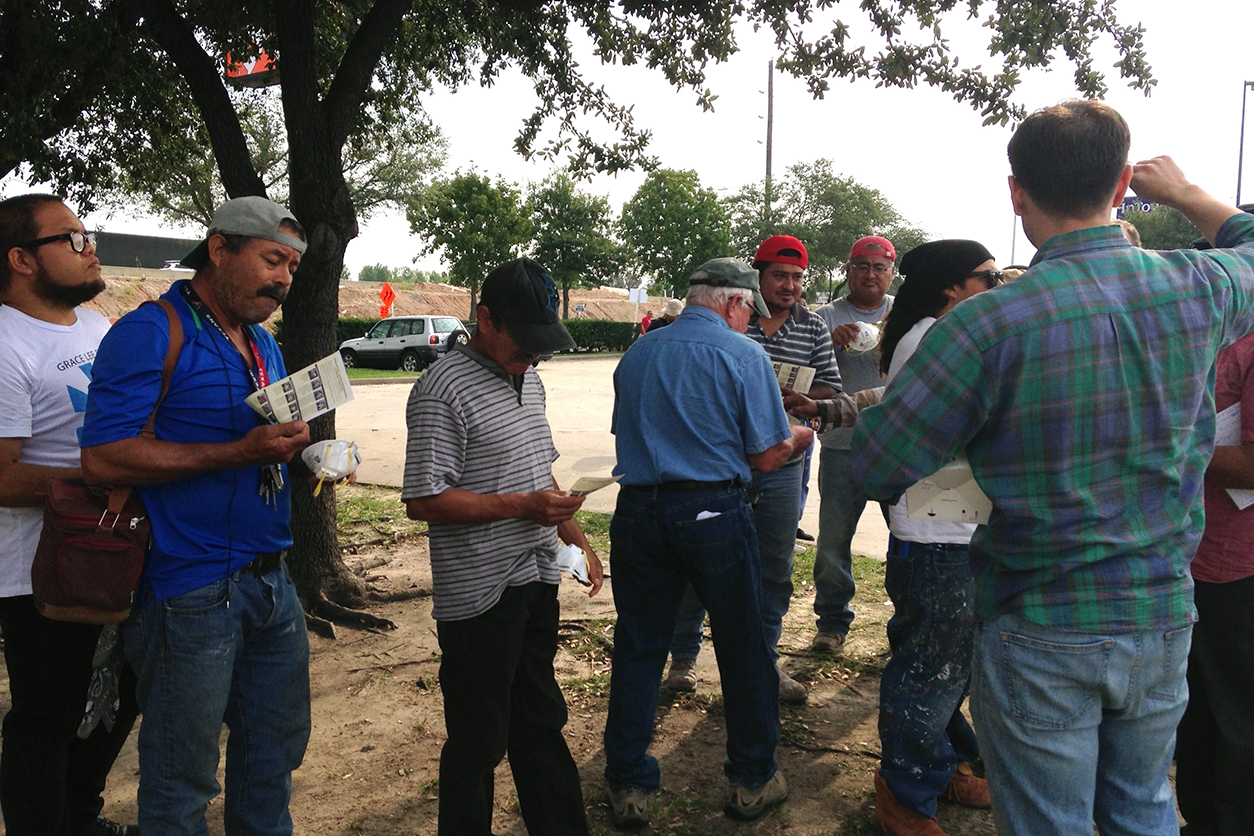 Trainers from WTP grantee organizations training day laborers following Hurricane Harvey in Texas. (Photo courtesy of Mitchel Rosen, Ph.D. / Rutgers School of Public Health)
Trainers from WTP grantee organizations training day laborers following Hurricane Harvey in Texas. (Photo courtesy of Mitchel Rosen, Ph.D. / Rutgers School of Public Health)Nik Theodore, Ph.D., from the University of Illinois Chicago, explained how day laborers are often a large part of the disaster cleanup workforce and how the rapid pace of recovery operations causes them to work long hours with very few breaks. They also have limited access to personal protective equipment.
These challenges, in addition to social barriers, call for training methods that integrate principles of language justice and cultural competency. The use of popular education techniques, such as train-the-trainers and participatory learning, are also helpful in reaching and training underserved populations.
Julie Thorstenson, Ph.D., executive director for the Native American Fish and Wildlife Society, shared the importance of listening to Alaska Natives and American Indian tribal members to integrate their tribal and ecological perspectives into training.
Focus on infrastructure, green spaces
Another key message from the workshop was the need to focus on developing infrastructure that can withstand climate-related disasters.
Justin Brown of Metropolitan Water Reclamation District of Greater Chicago (MWRD) presented a virtual tour of the Chicago River and flood mitigation infrastructure.
He shared how MWRD funds the Space to Grow partnership, which rebuilds schoolyards for public schools across the city. The schoolyards are built with green infrastructure and flood mitigation technology.
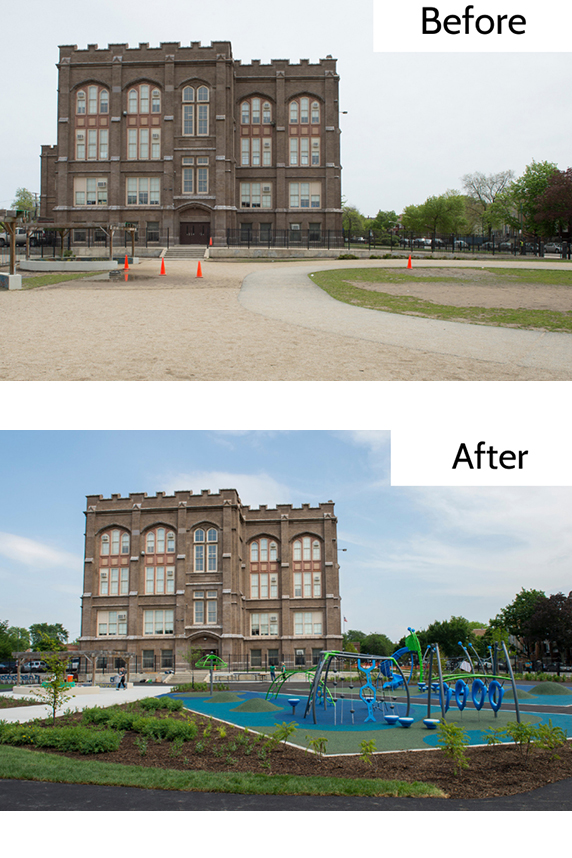 Nathan S. Davis Elementary School in Chicago before (left) and after (right) implementation of green infrastructure technology. (Photo courtesy of Metropolitan Water Reclamation District of Greater Chicago)
Nathan S. Davis Elementary School in Chicago before (left) and after (right) implementation of green infrastructure technology. (Photo courtesy of Metropolitan Water Reclamation District of Greater Chicago)Green infrastructure works by holding rainwater where it falls. To date, Space to Grow has transformed 30 schools throughout the city with the collective capacity of holding 5.6 million gallons of rainwater.
Take action through training
Workshop participants had an opportunity to advance their climate change knowledge and risk assessment skills through short training sessions and a tabletop exercise.
Training sessions featured presentations from subject matter experts, and covered topics on industrial hygiene, extreme heat, wildfires, hurricanes, and mental health.
The tabletop exercise walked participants through a series of scenarios while utilizing a risk assessment checklist, based on the recently updated WTP Climate Change Vulnerability Assessment Report(https://tools.niehs.nih.gov/wetp/public/hasl_get_blob.cfm?ID=13562). The checklist highlighted the possible vulnerabilities workplaces may encounter during a climate-related disaster. Participants shared feedback on how the checklist could be adapted and improved for use within their respective organizations.
“What we do is incredibly important,” said Janelle Rios, Ph.D., with WTP grantee Prevention, Preparedness and Response Consortium. “With every worker trained, we are potentially saving a life.”
(Meredith Hernlund and Kenda Freeman are research and communication specialists for MDB, Inc., a contractor for the NIEHS Division of Extramural Research and Training.)





